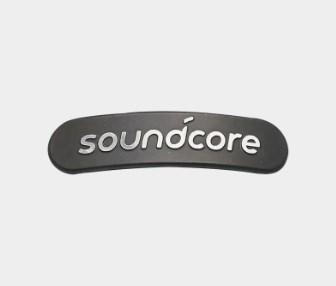Ways to Assess Deformation Risk of Aluminum Diamond Cut Logo in High Temperatures

Determining whether an Aluminum Diamond Cut Logo is likely to deform under high-temperature conditions involves a thorough evaluation of its material composition, manufacturing techniques, and thermal performance. As aluminum is a metal known for its relatively low melting point compared to other industrial metals, it is natural to question how such a metal behaves when exposed to elevated temperatures, particularly in outdoor settings, industrial environments, or near high-powered electronic devices. Evaluating the heat resistance and dimensional stability of the logo is essential to ensure it maintains its visual and structural integrity throughout its lifespan.
The first aspect to consider is the type of aluminum alloy used in the production of the Aluminum Diamond Cut Logo. Different alloys have varying thermal expansion coefficients and yield strengths at elevated temperatures. Logos manufactured from high-grade aluminum alloys, such as those used in aerospace or automotive applications, are typically engineered to maintain their shape under a wide range of temperatures. However, lower-cost alloys or poorly processed materials may expand, soften, or warp when exposed to consistent heat. Laboratory testing methods such as thermal cycling and heat deflection tests are often employed to simulate prolonged exposure to high-temperature environments. These tests gradually increase the temperature while measuring whether the logo begins to warp, bend, or lose alignment. A high-quality Aluminum Diamond Cut Logo should be able to withstand these conditions without visible distortion.
The design thickness of the logo is another critical factor. Thinner aluminum parts are more prone to warping, especially when subjected to uneven heating or direct flame contact. In evaluating the potential for deformation, experts also examine whether the diamond-cut surfaces, which involve precise machining, might create stress points that could react differently under thermal expansion. Finite element analysis (FEA) software can be used in product design stages to simulate how heat distributes across the surface and predict whether internal stress will cause shape changes under specific temperature loads. In addition, manufacturers may conduct actual oven testing, placing the finished logo in a controlled high-heat chamber and monitoring for physical distortion or surface damage over time.
Surface treatments applied to the Aluminum Diamond Cut Logo also affect its thermal behavior. Anodized finishes and protective coatings may offer additional resistance by insulating the material and reducing direct heat absorption. However, poor-quality coatings may blister, crack, or detach when the temperature exceeds their resistance threshold, exposing the raw metal underneath and increasing the likelihood of deformation. This is why heat resistance testing must also include evaluations of the surface layer’s integrity under elevated temperatures. For applications requiring frequent exposure to heat, such as automotive engine components or sun-exposed exterior signage, thermally stable coatings are necessary to protect both the aesthetics and structural reliability of the logo.
Finally, long-term real-world performance is one of the most telling indicators of whether an Aluminum Diamond Cut Logo will deform under heat. Field testing over months or years in high-temperature climates can reveal how a logo behaves under continuous thermal stress. Comparing before-and-after measurements, inspecting for warping, and documenting color and texture changes allow manufacturers and users to make informed judgments. This combination of simulated laboratory tests and actual environmental exposure gives the most complete assessment of thermal deformation risk.
In conclusion, evaluating whether an Aluminum Diamond Cut Logo is susceptible to deformation in high-temperature conditions involves analyzing the alloy type, design structure, machining precision, surface treatments, and performance in both laboratory and field tests. When properly engineered and tested, the logo should remain dimensionally stable and aesthetically consistent even after prolonged exposure to heat, ensuring its functionality and brand presentation are not compromised.
Materials: Aluminum
Thickness: 1mm, 1.5mm, 2mm, 3mm, 5mm
MOQ: 100pcs, all depends customer's request, small orders are accepted
Size and shape: Oval, rectangle, square, round, irregular shapes, and customized
Colors: Customized colours matching with Pantone, RGB, CMYK
Printing: Silkscreen printing, painted
Backing: Strong permanent adhesive, holes, studs
Cutting: Die cut
- Art
- Causes
- Crafts
- Dance
- Drinks
- Film
- Fitness
- Food
- الألعاب
- Gardening
- Health
- الرئيسية
- Literature
- Music
- Networking
- أخرى
- Party
- Religion
- Shopping
- Sports
- Theater
- Wellness


